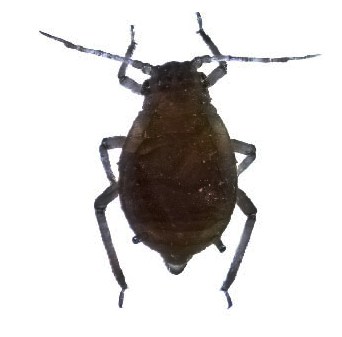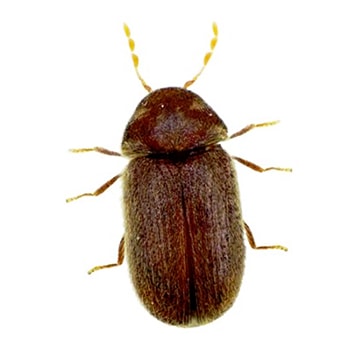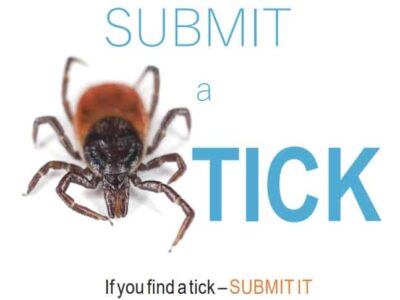Tick Lookalikes
As the weather warms up, the bugs come out – and some are less welcome than others! Biting bugs are generally disliked everywhere, but few are more reviled than the dreaded tick. However, not every tick looking bug is a bloodsucker. Poplar weevils, brown marmorated stink bugs, and clover mites are all insects that look like ticks.
But how can you tell them apart? All of these insects are typically about the same size as a tick; and can range in size from the size of a sesame seed, to the size of a blueberry! Here are some of the most frequently encountered tick lookalikes in the United States (and North America).
🔻 Click On Your Tick Lookalike 🔻
Weevil Beetles
Nothing to fear here, this little fella is just a common Weevil. It has six legs, three body regions, and a stubby pair of antennae; making it a vastly different critter to a tick when examined under a microscope.
In comparison, a large adult tick would have eight legs, two body regions, and no antennae to speak of. Also, they’re harmless and of no concern to humans.

Spider Beetles
Spider beetles are tiny insects that do in fact look very much like tiny spiders – however are totally harmless to humans. They have only six legs, however, although there are two long extensions near their head which resemble legs, making many people think they are spiders and not beetles.
Spider beetles also have round bodies with a smooth carapace, or outer shell, which adds to the spider-like appearance. The most common types of spider beetles in North America is the Mezium americanum, or American Spider Beetle. There are also White-marked spider beetles and the Smooth spider beetle.
For the most part, they are not considered a serious pest, but given the right conditions, spider beetles can become numerous and their tendency to eat large amounts of food stuff make them a nuisance.
When this happens, they can end up in food preparation areas or restaurants, retail outlets or throughout hotels, hospitals and other areas with large kitchens. Plus, they can easily end up transported and inside homes, hiding in pantries and cupboards.

Red Velvet + Clover Mites
Often confused with “Clover Mites” (which are extremely similar, but not the same species of mite) Red Velvet Mites do not pose any serious risks to humans. They don’t typically bite, and only feed on grass, plants, weeds, and flowers.
During the fall however; after the plants they feed on start to perish from the cold, they commonly “invade” homes in large quantities, causing quite a nuisance.
When Red Velvet (or Clover) Mites are crushed, they often leave behind a red stain that will show up on especially light materials such as rugs, curtains, and pillows. This is why it is recommended that the mites are vacuumed up rather than squished.

Brown Marmorated Stink Bugs
The brown marmorated stink bug (Halyomorpha halys) is an invasive stink bug species that was first identified in Allentown, Pennsylvania in 2001. It is thought that they first came to the United States in shipping containers arriving from Asia.
Besides its rather gross, pungent odor, the brown marmorated stink bug is most notorious for having become an annual nuisance for homeowners for its habit of gathering in large numbers on the sides of houses and buildings in the late fall, and entering these structures in order to survive the winter.

Varied Carpet Beetles
Carpet beetles, as their name implies, sometimes infest carpets. Similar to clothes moths, the pests also feed on many other items composed of wool, fur, felt, silk, feathers, skins, and leather. Such materials contain keratin, a fibrous animal protein which the larvae are able to digest.
Cotton and synthetic fabrics such as polyester and rayon are rarely attacked unless blended with wool, or heavily soiled with food stains or body oils. Infestations of carpet beetles can develop undetected, causing harm to vulnerable items.

The Common Flea
Reddish brown in color, fleas are a common sight for people having pets or animals in general. Fleas are among the bugs mistaken for bed bugs because their bites are traditionally very itchy.
However, they differ from bed bugs in terms of size (⅛ inch) and shape (segmented and laterally flattened). If you suspect a flea bite, go see your doctor. As it is the case with other insects, fleas are vectors for plenty of diseases.
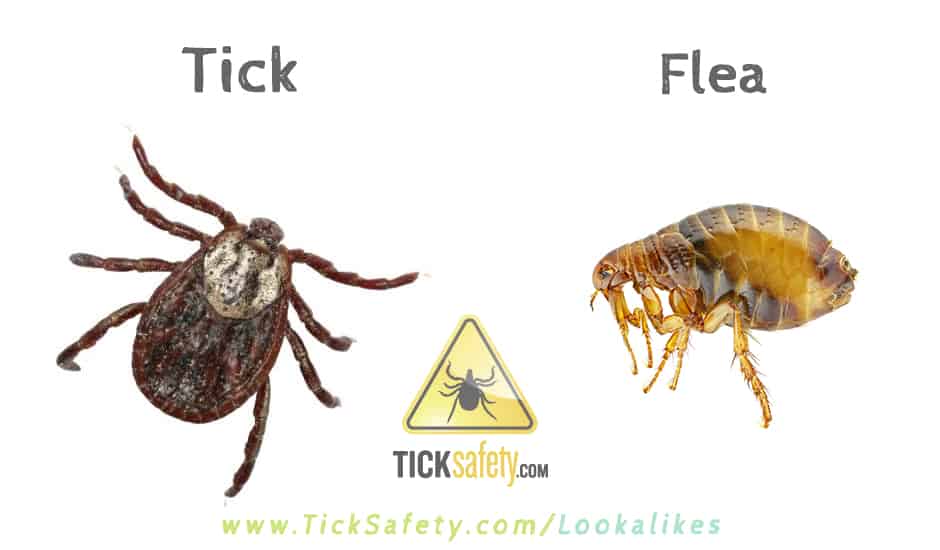
Bed Bugs
Bed bugs have made a major comeback in the U.S. and around the world. The public experienced a reprieve from the pests after World War II, due in part to the widespread use of DDT. The rebound in recent years was probably due to multiple factors, including less potent insecticides, global travel, and a loss of vigilance practiced in years past.
Whatever the reasons, bed bugs are again part of everyday life, with infestations common in homes, apartments, hotels, dormitories, schools and shelters. They also occur in hospitals, nursing homes, libraries, theaters, offices, municipal buildings, and even on public transportation— wherever there are people, there can be bed bugs.

Pseudoscorpions
Sometimes called ‘false’ or ‘book’ scorpions, pseudoscorpions are actually tiny, harmless arachnids that prey on a number of small insects, mites, and larvae, which is why they sometimes survive in human homes — they eat booklice, clothes moths, dust mites, ants, and more.
There is a tiny venom gland in their pincers that is used to subdue their minute prey (they are harmless to humans and are simply too small to bite us).

Black Aphids
If you are a gardener or you grow crops, you definitely have dealt with these tiny, annoying insects. Aphids are sap-sucking bugs, which means they can cause no harm to humans; however, are hazardous to gardens and plants.
These insects remain active mostly through spring to the late summer on outdoor plants, but on the indoor greens, they can live all year round.
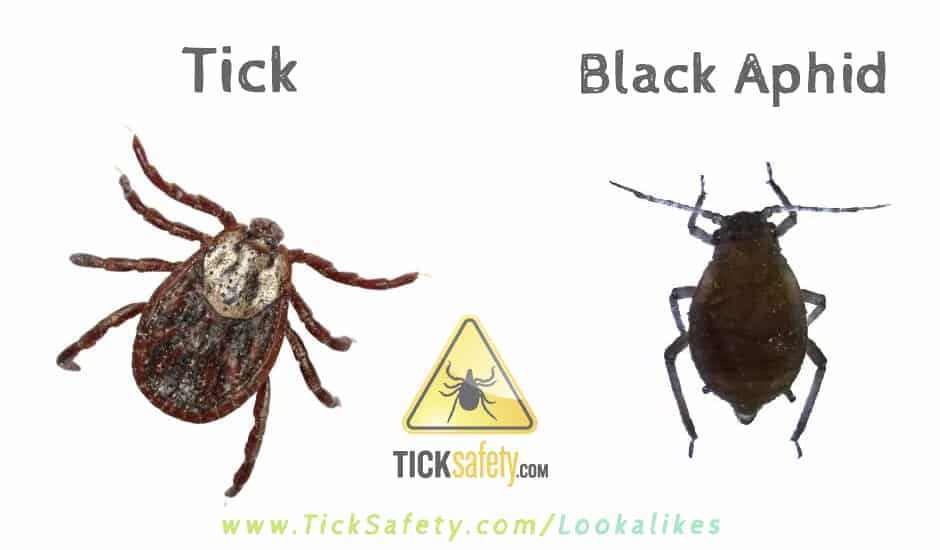
Larder Skin Beetle
While these beetles are voracious eaters, unlike ticks, they’ll munch on almost everything from jackets, textiles, wood, boxes, and books – but not people! These beetles are identifiable by their black head and brown body. They are often mistaken for ticks because they are very tiny.
While they might not bite on humans or feed on blood, they sometimes mistakenly take a munch on skin. When this happens, they leave red and itchy blisters on the skin, but quickly detach and fall away.

Head Lice
Because they feed on humans too, these parasites are similar to ticks; however, tend to be much smaller and harder to see. They are mostly found in human hairs (hence the name), but can also commonly be found on bird feathers.
They are wingless, much narrower than a tick, and have a semi-transparent body. Unlike ticks though, head lice only have six legs and do not carry life-threatening diseases like Lyme disease. They will however, make your head super itchy, causing extreme uncomfortableness – especially in warmer weather.

Harlequin Bug Nymphs
Sometimes also referred to as a “Cabbage Bug,” Harlequin Bug nymphs are the only phase of this insect that is comparable to ticks because of their often dark brown and reddish color. At maturity, they have hard forewings and a colorful body (white, orange, and black – as shown).
Unlike ticks, they have just six legs (not eight) . Other identifying characteristics of these Cabbage Bugs include their snouted legs, red and black eyes, and antennae.

Deer Flies
For some reason, Deer Flies are often confused with a number of insects including fleas, flies, and yes, even ticks! Much like the horse fly, the Deer Fly feeds on the blood of humans and other animals.
They come out in warm weather and rely on color, movement or carbon dioxide output to find hosts. These pests rarely enter homes because they prefer moist habitats like marshes, woodland ponds, and streams.
Deer Flies use their sharp mouthparts to inflict painful bites, and while bites don’t typically have long-term effects, they can cause allergic reactions in some people. In addition, Deer Flies occasionally carry diseases like Tularemia and can transfer disease to humans through their bite.

Drugstore Beetle
These insects are a real menace in the home, especially in pantries and kitchens. While they can survive for several weeks without food, they become a mess once they find where the cereals, grains, and flour are stored. Aside from this, they are also attracted to light. Their oval shaped bodies allow them to often times get confused with ticks.
Drugstore Beetles have have brown, hard outer shells, and wings – but cannot fly. Unlike ticks, they have just six legs (not eight). Other identifying characteristics of these Cabbage Bugs include their snouted legs, red and black eyes, and antennae.

Cockroach Nymphs
Cockroach nymphs are sometimes called “Brown Banded Cockroaches” because of their light brown color and white bands. They are found mostly in floorboards, in walls, and underneath beds.
They strike an uncanny resemblance with ticks when they are newly hatched with their light brown, transparent body that darkens into reddish-brown as they mature. Luckily, they don’t feast on humans (or blood for that matter).

House Spiders
Ticks and spiders are both arachnids (they both have 8 legs), but they are usually fairly distinguishable from one another. Spiders have four pairs of limbs, an unstretched exoskeleton and a convex body. They usually prey on insects as well as small animals by trapping them in a sticky web – and most (if not not all) do not prey on humans.
Spiders tend to be most active during the summer, and can usually be spotted as they crawl on your skin – unlike ticks, which you almost never feel crawling on you. Luckily, they rarely bite on humans; but if they do, spider bites can be itchy and swollen, and oftentimes, painful.
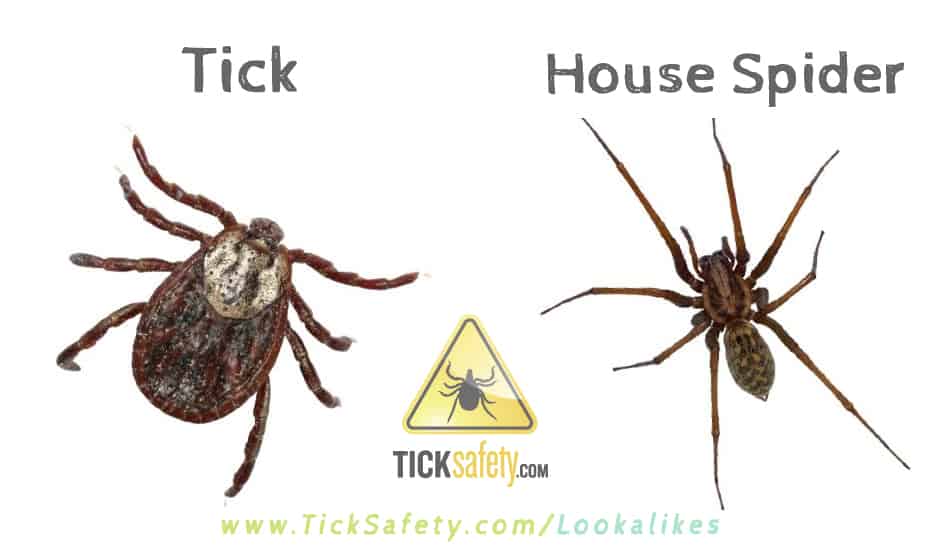
TickSafety.com and TestATick.com are both programs of Center for Wilderness Safety – a nonprofit organization celebrating nearly two decades of wilderness medicine education and training.












